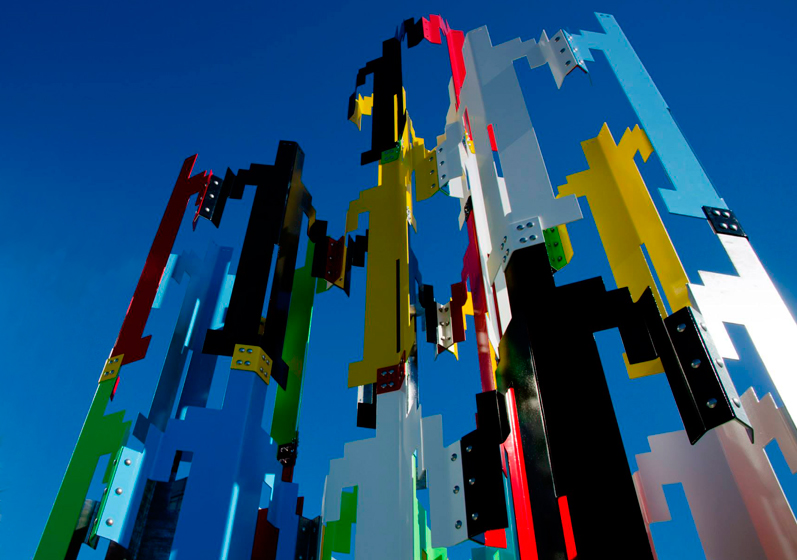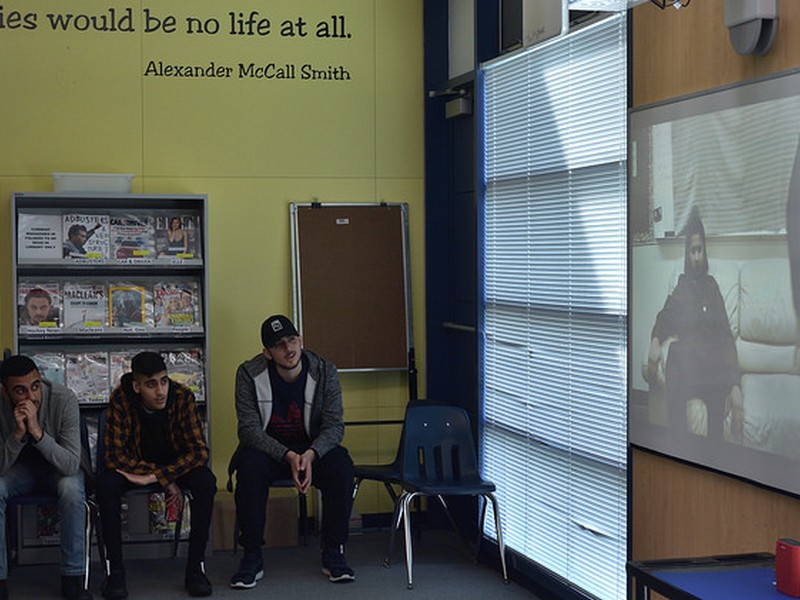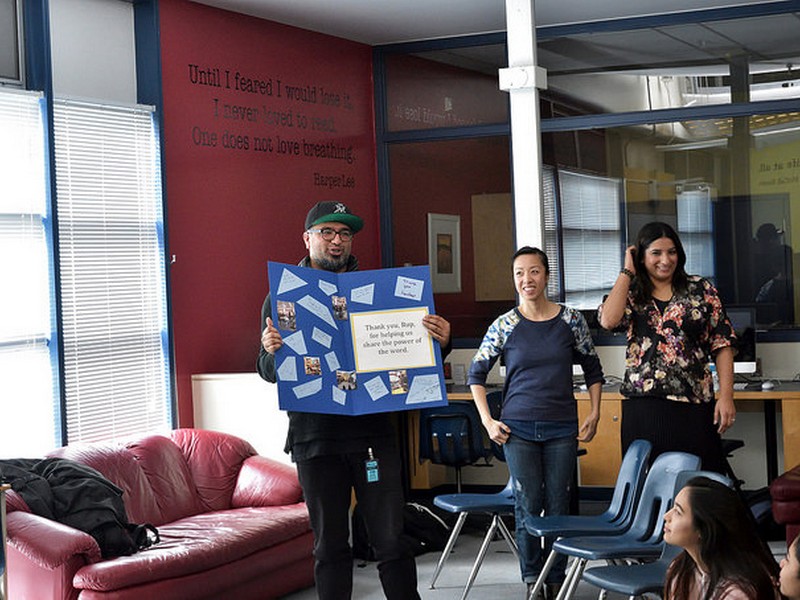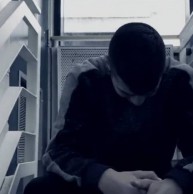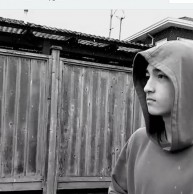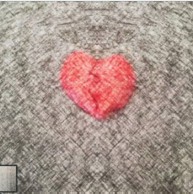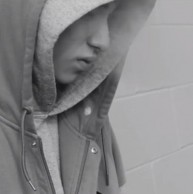McNair Secondary: Building a Chorus of Voices for our Youth to Stand Tall
Arts Education, Information Technology, Language Arts, Social Studies
School: McNair Secondary School, Richmond
Teacher: Quynh Aura and Meena Uppal
Artist Collaborators: Rup Sidhu
Class: Grade 11/12
Overview
The Vancouver Biennale 2017 BIG IDEAS program offers an additional platform for the youth at McNair Secondary School to explore art within their community while constructing/discovering their own story as connected to others. Building a “chorus” of similar stories allows students to see the power of coming together through the courage of vulnerability. Voicing their own story with others is essential for their personal process of healing, but also for the empathetic path for social action.
In being able to speak their stories in their own voices through various texts (video, lyrics, journals, poetry, dialogue), the students become empowered through discovering their personal story and see the strength in commonalities of story shared with others.
Connection to the Vancouver Biennale Exhibition
Due to the severe snow condition this winter, the field trip to visit the Vancouver Biennale art installations was cancelled. Instead they viewed the virtual art tours of Human Structures Vancouver by Jonathan Borofsky and F Grass by Ai Weiwei through BIG IDEAS Anywhere. In representing the power of shared story, Borofsky’s Human Structures Vancouver sculpts a visual installation of figures connected to “convey a sense of universal connectivity” and a “notion of humanity working together to build our world”.
The other art inspiration is F Grass by Ai Weiwei where the theme of the individual and the collective was explored. The teachers facilitated a discussion around the theme as well as the important relationship between the two holding power in the “resilience of the human spirit”.
Weiwei’s art piece utilizes materials of sunflower seeds and grass to share “a similar identity” of coming together to “bear tremendous power and vitality”. Similarly, our students come to us as individuals with varying stories of struggle; this project allows the students to recognize the commonalities amongst their stories and collectively unite to empower each other towards the social change of actively voicing their narratives together on a digital platform.
BIG IDEAS
In synthesizing the thematic teaching methods of our program for grade 11 and 12 students, curricular competencies from English 11 & 12, Twentieth Century World History 11, Creative Writing 11 and Social Justice 12 have been combined to form the central idea:
The story of self begins with students confronting their own narratives through reflection in writing to uncover the language of their identity, (English 12). Students then use a Social Studies framework (Social Justice 12 and Twentieth Century World History) to assess the conditions of their contextual pasts to their present being as related to stories from others around them. Strength of story comes together when students realize their connectedness to others and work towards both healing of the self and action for the marginalized.
(Adapted from Curricular Competencies from English 11 & 12, Twentieth Century World History and Social Justice 12.)
Guiding Questions
How can our marginalized youth begin to confront their stories through various texts and heal their pasts through artistic self-expression?
When youth come together in shared narrative, how can they find power in their collective stories to act for others as well as themselves?
Cross-Curricular Access
Assessing social patterns of marginalization and change through time (Social Justice 12 and Twentieth Century World History), allow students deeper reflection into their sense of being, struggle and belonging as a culmination of history of context woven with their individual stories of childhood. In the past we have visited the Downtown Eastside and its various support facilities, including the Union Gospel Mission. Some of our students, tragically, are all too familiar with the stories of pain, addictions, and mental health. Examining the empowerment of the community through time allows students to see hope through tragedy, healing through pain, and movement through stagnation.
By moving students to work towards their shared story, awareness becomes shared voice and empowerment. Revealing their shared narrative to others on a formal digital platform offers others a glimpse into the lives of our youth and creates an awareness that cannot be “unseen.”
Learning Process/ Inquiry Challenges
The story of self begins with students confronting their own narratives through reflection in writing to uncover the language of their identity, (English 12). Students will then use a Social Studies framework (Social Justice 12 and Twentieth Century World History) to assess the conditions of their contextual pasts to their present being as related to stories from others around them. Strength of story comes together when students realize their connectedness to others and work towards both healing of the self and action for the marginalized.
Narrative Inquiry: Students write about a struggle in their lives. Narratives remain anonymous. Responses are then collected and redistributed to students to read out loud. In smaller groups, students identify themes within the narratives and categorize them. As a class, themes are listed on the board and narratives are categorized under each.
Virtual Art Tour Inquiry: students work through a inquiry package which guides thoughts and perceptions they first have of the Vancouver Biennale art work, (Human Structures Vancouver and F Grass). The students explore notions of individuality and community within each art piece and discuss how the figures within each piece work as individuals and as a whole.
After the virtual art tour, students discuss their experiences of the art and find connections with the notions of individuality and community. To move towards the idea of possibility and transformation in their lives, students think about when their lives transformed from struggle to possibility and the extent to which their struggles were faced individually and healed communally. Working with digital storytelling by creating video poems, students choose their roles based on their interests (i.e. writer, videographer, music compilation, actor/actress, reader etc).
Music and Technology Inquiry: Students explore song/lyric/dialogue writing, vocal expression, music production and various technologies to capture the sentiment of their own stories. Students are interest in using video and music as media to express their stories. Some students choose to engage in song-writing and music production as an accompaniment to the overall project created.
Student Creation
To provide opportunities for all students in the program to express their own interests and talents, the following sub-projects have been outlined to culminate in a film project that includes each of their contributions.
Writing: Written narratives from students can be created in various forms, including: poetry, narrative prose, journal entries, dialogue, speeches, rap, spoken word and anecdotes. Students interested in writing also have the opportunity to create a storyboard for the final film project. These written pieces act as the storyline or voice over in their video poems.
Visual: Students who prefer to work with visual media create 3D art pieces, paintings, drawings, or photographs to be used in the video poems. Others can take on an acting role on camera.
Music: Singing and song-writing is a genre for some of our students to express their stories. Including this genre in the project will allow interested students to sing narratives written from the class to an original score or create musical accompaniments to the narratives within the project.
Reflection
Teachers – Meena Uppal and Quynh Aura
Our students in the alternate program are often the most vulnerable kids in our school and asking them to be vulnerable in school-related assignments is a fearful task for many of them. In our second year working with Biennale and Rup, we introduced a theme: Individual struggle can come together in collective strength. Students worked hard to decipher this theme and come up with relevant examples and engaging stories. It was; however, a challenge that felt superficial to many of them. What was missing was them. Within their groups, stories began to emerge that much more genuinely reflected their lives. This is the process, which unfolded the first time we worked with Biennale, and the journey that needed to take place when students came together. They joined in story and worked as a communal force to develop the visual for their story through video and music. Stress ensued, tempers rose, anxiety trickled through, but all in all, the perseverance through such an immensely exposing challenge led to growth. Though, they may not immediately recognize this newfound strength, it is hopefully one that remains with them, even if silently.

